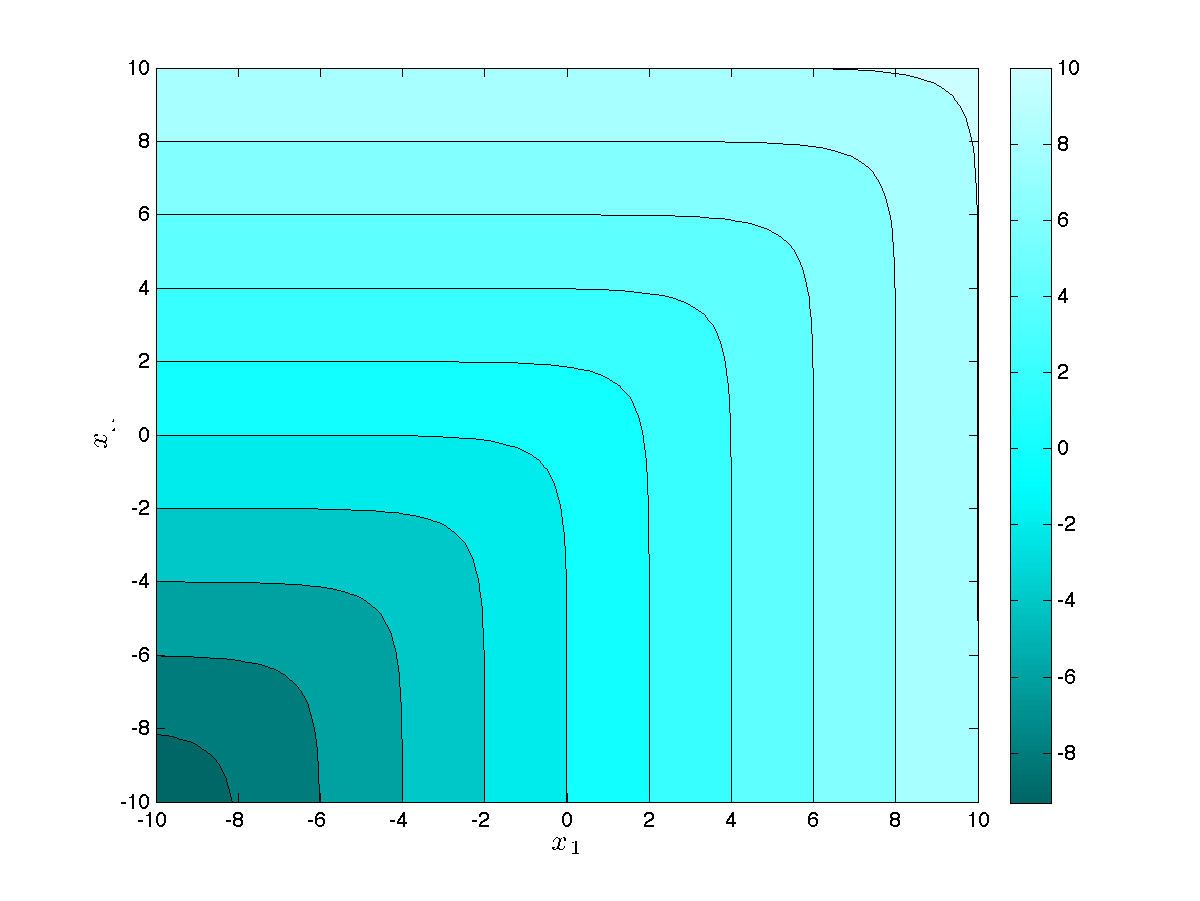Log-Sum-Exp (LSE) Function and Properties
The log-sum-exp (LSE) function in ![]() is the function
is the function ![]() , with domain the whole space
, with domain the whole space ![]() , and value at a point
, and value at a point ![]() given by
given by
![]()
 |
The log-sum-exp function in |
The log-sum-exp function is increasing with respect to each argument, and convex.
Proof: The monotonicity of the log-sum-exp function is obvious. The convexity is obtained as follows. As seen here, the Hessian of the log-sum-exp function is
![]()
where ![]() , and
, and ![]()
We need to check that for every ![]() , we have
, we have ![]() . Let us fix a vector
. Let us fix a vector ![]() . We have
. We have

due to the Cauchy-Schwartz inequality.
